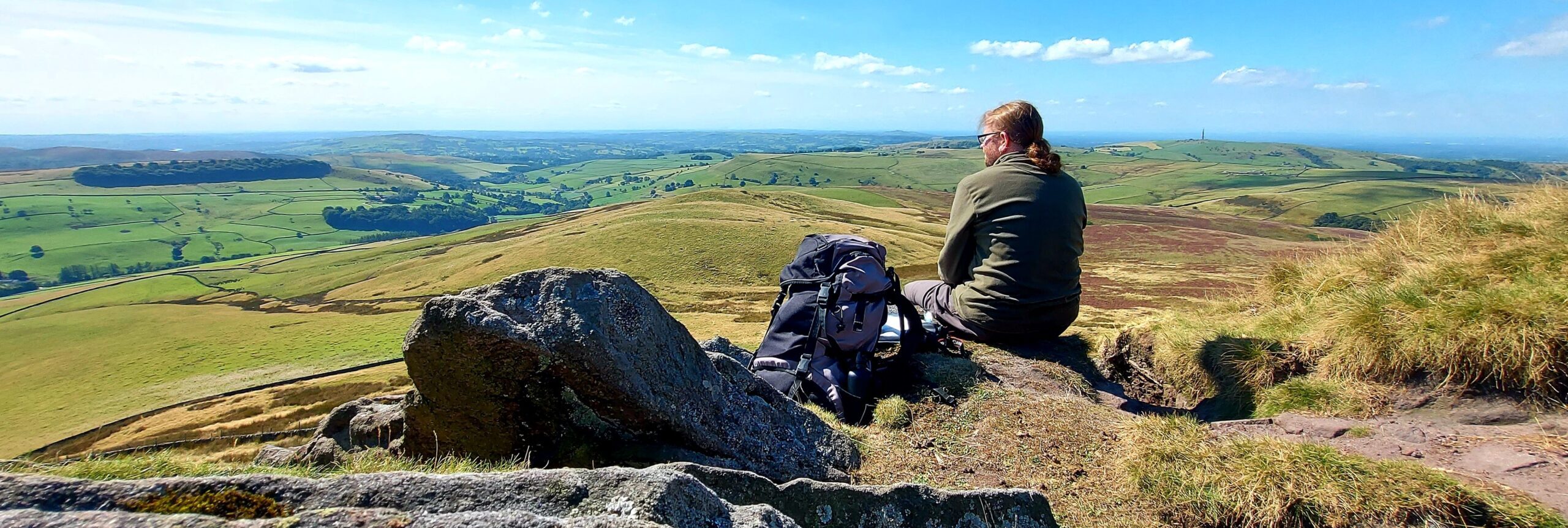Approximate Location
OS Grid Reference: SJ 865 775
Latitude: 53.29.77N Longitude: 2.21.12W
Stormy Point is a rock formation overlooking the north-east slopes of Alderley Edge and commands views across to the Pennines. Colin and Susan visited it many times, especially in The Weirdstone of Brisingamen. Principally, this is because Stormy Point lies very close to the Iron Gates and is mentioned as a waymarker on the farmer and the wizard’s journey from Thieves Hole to the cave of the sleeping knights: “By Seven Firs and Goldenstone they went, to Stormy Point and Saddlebole” (Weirdstone, The Legend of Alderley).

A narrow chasm, running along the formation, known as the Devil’s Grave was visited by Colin and Susan on their first day on the Edge. They were drawn to a cave within the chasm with a circular hole in the roof that was partially blocked with an oblong stone. Gowther told them that if they turned whiddershins (anti-clockwise) three times then the Devil would be summoned. This story may have been inspired by Garner’s own father who told the tale to a Alan when he was a boy. After running round the feature “A screech came out of the ground beneath my feet, and screams and groans and cackling and moaning, and pebbles flirted from under the stone and out of the trench, and sand and bits of twig, and there was a stamping sound in the cave, and more screeches” (Where Shall We Run To Now? 2018, 125). The terrified Garner immediately fled but it was later revealed that his dad had arranged for his Uncle Syd to be hiding in the Devil’s Grave – “They reckoned it was time, and I was old enough to learn the Edge” (Where Shall We Run To Now? 2018, 126).
This practical joke may well have inspired Garner to use the location as the place where Colin and Susan encounter hundreds of Svart-alfar issuing forth. Cadellin subsequently confirmed that it was a gateway to their caves (Weirdstone, Chapter 3: Maggot-breed of Ymir; Chapter 4: Fundindelve).
Similar to the Engine Vein, the Devil’s Grave is a shallow copper mine that probably dates to the Bronze Age.

